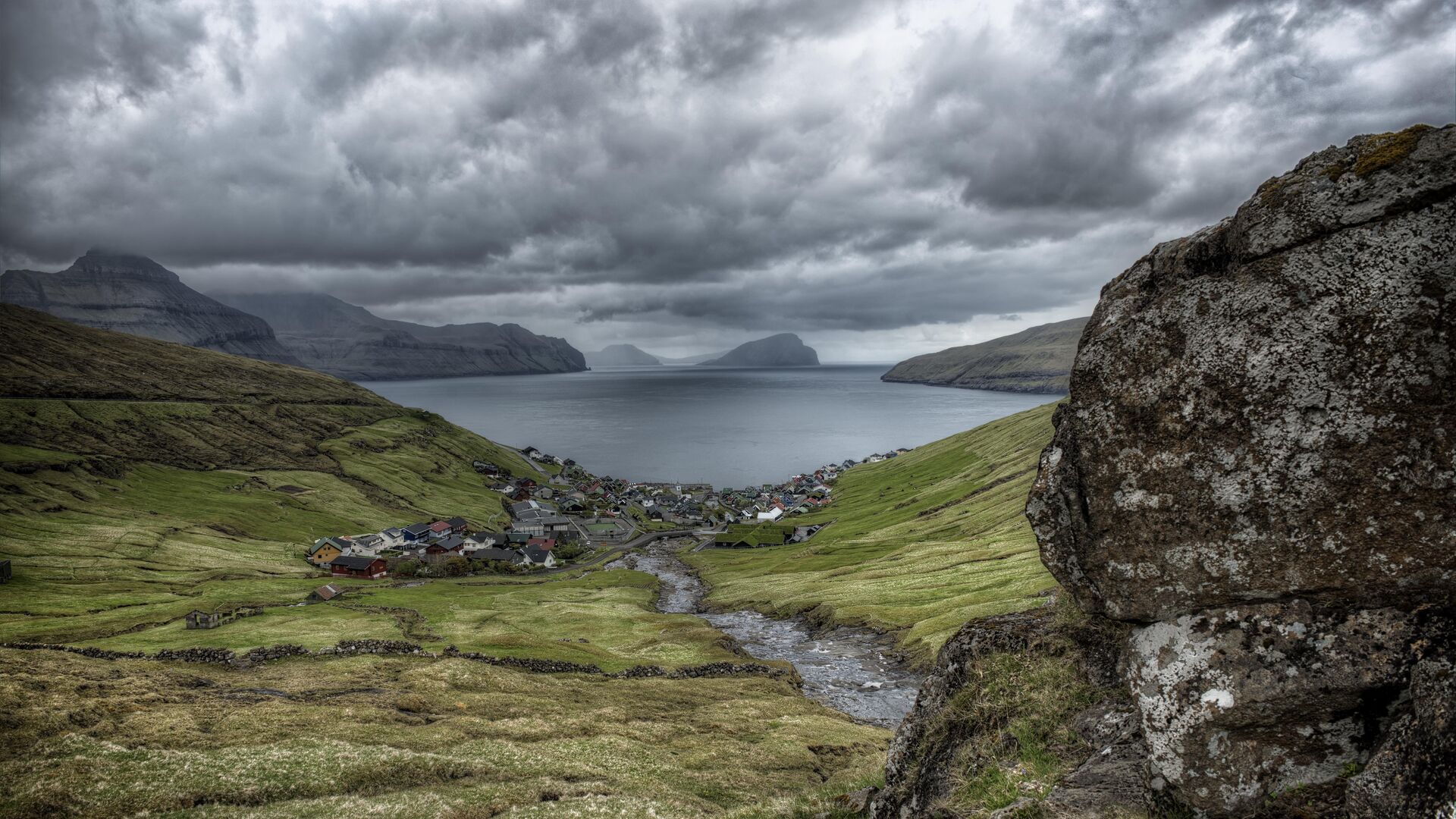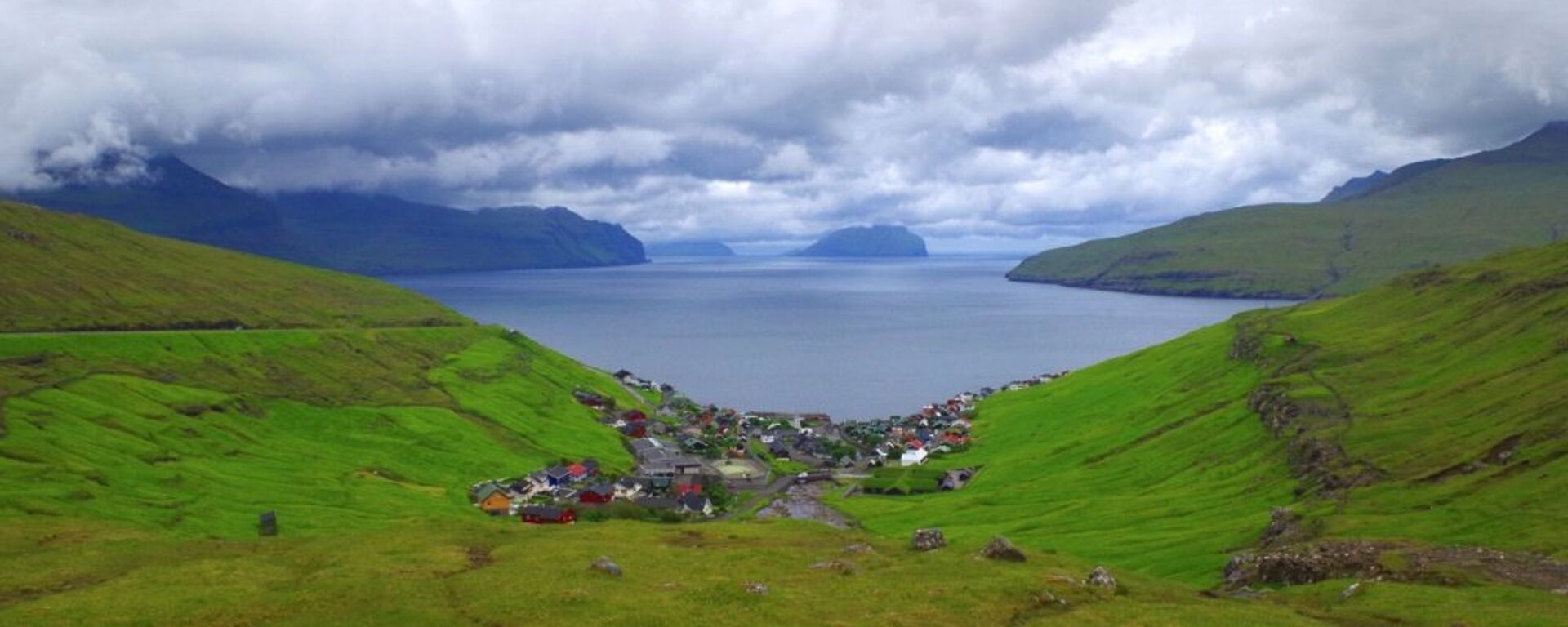https://sputnikglobe.com/20220609/will-make-us-a-bomb-target-new-danish-radar-sparks-concern-on-faroe-islands-1096141692.html
'Will Make Us a Bomb Target': New Danish Radar Sparks Concern on Faroe Islands
'Will Make Us a Bomb Target': New Danish Radar Sparks Concern on Faroe Islands
Sputnik International
According to the Faroese opposition, the current arrangement, which allows the restoration of a Cold War-era radar and in which the local parliament has not... 09.06.2022, Sputnik International
2022-06-09T06:35+0000
2022-06-09T06:35+0000
2022-06-09T06:35+0000
denmark
scandinavia
faroe islands
radar
nato
https://cdn1.img.sputnikglobe.com/img/102998/36/1029983602_0:0:7361:4141_1920x0_80_0_0_46b9922da4b1993ab5a7fdeb7374ff6b.jpg
In recent months, the Danish government has been pushing the Faroe Islands, part of the Danish Realm, to accept the a new and modern air warning radar.Symbolically, it is planned to stand on the same windswept mountain peak outside the city of Thorshavn, where a Cold War-era radar disbanded in 2007 once stood.While the radar has sparked protests in the Faroe Islands, the Danish government maintains that the alleged threat from Russia makes it necessary to step up surveillance, citing both the conflict in Ukraine and tensions in the Arctic.A total of DKK 390 million ($56 million) has been earmarked for the radar, which corresponds to similar installations that currently monitor the North Atlantic from Iceland and the Shetland Islands.Meanwhile, the Faroese opposition is particularly dissatisfied with the fact that the island nation's parliament hasn't been consulted.Hoydal is also nervous that given the radar system, the Faroe Islands could become a military target in the event of war.“We want the Faroe Islands to be a peaceful area without military tensions, and I fear that Russia may perceive this radar system as a hostile act and ultimately make us a bomb target,” he said.The decision to install a radar in the Faroe Islands is part of the DKK 1.5 billion ($220 million) package for increased surveillance in the Faroe Islands and Greenland, adopted in February 2021.According to Michaelsen, if the NATO bids of Sweden and Finland are accepted, the entire Baltic Sea will be surrounded by allied countries, which will place a greater emphasis on the routes north of Scandinavia.“We must expect that Russia will focus more on expanding the Northern Fleet in Murmansk on the Kola Peninsula. In the event of an armed conflict with NATO countries, it is likely that Russian aircraft instead of the Baltic Sea will send military aircraft north of Scandinavia,” Michaelsen mused.The agreement is expected to be signed by the Danish Defence Minister and Faroese Foreign Minister Jenis av Rana today (Thursday, 9 June).The planned radar in the Faroe Islands, an island nation of 53,000, will have a range of up to 400 kilometres. It will close a gap in the surveillance of the airspace between Iceland and the Shetland Islands north of Scotland. The signal from the radar on the Faroese mountain top will be sent directly to Denmark, where it will be processed at Karup Air Base on Jutland Peninsula and shared with NATO partners.
https://sputnikglobe.com/20220509/faroes-dismiss-brit-eu-attacks-over-russian-trawler-licenses-say-cooperation-a-sovereign-matter-1095369484.html
denmark
scandinavia
faroe islands
Sputnik International
feedback@sputniknews.com
+74956456601
MIA „Rosiya Segodnya“
2022
News
en_EN
Sputnik International
feedback@sputniknews.com
+74956456601
MIA „Rosiya Segodnya“
Sputnik International
feedback@sputniknews.com
+74956456601
MIA „Rosiya Segodnya“
denmark, scandinavia, faroe islands, radar, nato
denmark, scandinavia, faroe islands, radar, nato
'Will Make Us a Bomb Target': New Danish Radar Sparks Concern on Faroe Islands
According to the Faroese opposition, the current arrangement, which allows the restoration of a Cold War-era radar and in which the local parliament has not been consulted, is untenable and has brought back memories of the colonial era.
In recent months, the Danish government has been pushing the Faroe Islands, part of the Danish Realm, to accept the a new and modern air warning radar.
Symbolically, it is planned to stand on the same windswept mountain peak outside the city of Thorshavn, where a Cold War-era radar disbanded in 2007 once stood.
While the radar has sparked protests in the Faroe Islands, the Danish government maintains that the alleged threat from Russia makes it necessary to step up surveillance, citing both the conflict in Ukraine and tensions in the Arctic.
“Since the old radar was shut down, there has been a gap in monitoring the North Atlantic. <...> At that time, it was an important piece in NATO's alert system. Therefore, in recent years, NATO has put pressure on Denmark to build a new air warning radar”, military analyst Hans Peter Michaelsen
explained to TV2, adding that it became even more relevant after the conflict in Ukraine.
A total of DKK 390 million ($56 million) has been earmarked for the radar, which corresponds to similar installations that currently monitor the North Atlantic from Iceland and the Shetland Islands.
Meanwhile, the Faroese opposition is particularly dissatisfied with the fact that the island nation's parliament hasn't been consulted.
“I am strongly opposed to this agreement on the radar system. It is completely unreasonable that such a serious decision as the construction of a large military facility has not been taken by Faroese politicians. We are treated like a small piece in a game of political superpowers, and it sends memories back to the colonial era, where we had nothing to say,” former deputy Prime Minister Høgni Hoydal, the leader of the pro-independence Republican Party told TV2.
Hoydal is also nervous that given the radar system, the Faroe Islands could become a military target in the event of war.
“We want the Faroe Islands to be a peaceful area without military tensions, and I fear that Russia may perceive this radar system as a hostile act and ultimately make us a bomb target,” he said.
The decision to install a radar in the Faroe Islands is part of the DKK 1.5 billion ($220 million) package for increased surveillance in the Faroe Islands and Greenland, adopted in February 2021.
According to Michaelsen, if the NATO bids of Sweden and Finland are accepted, the entire Baltic Sea will be surrounded by allied countries, which will place a greater emphasis on the routes north of Scandinavia.
“We must expect that Russia will focus more on expanding the Northern Fleet in Murmansk on the Kola Peninsula. In the event of an armed conflict with NATO countries, it is likely that Russian aircraft instead of the Baltic Sea will send military aircraft north of Scandinavia,” Michaelsen mused.
The agreement is expected to be signed by the Danish Defence Minister and Faroese Foreign Minister Jenis av Rana today (Thursday, 9 June).
The planned radar in the Faroe Islands, an island nation of 53,000, will have a range of up to 400 kilometres. It will close a gap in the surveillance of the airspace between Iceland and the Shetland Islands north of Scotland. The signal from the radar on the Faroese mountain top will be sent directly to Denmark, where it will be processed at Karup Air Base on Jutland Peninsula and shared with NATO partners.




